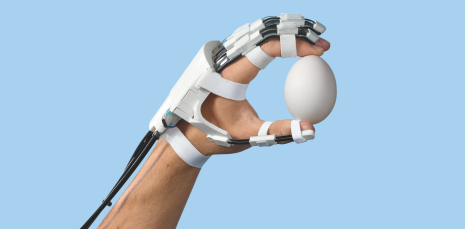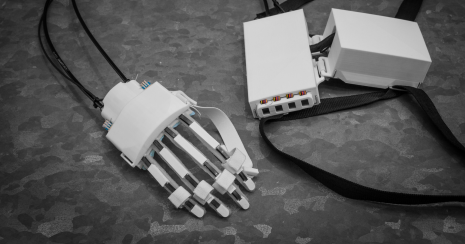
Stroke is an unfortunate, and more common than we’d like to think, occurrence. Approximately one in six people will suffer a stroke in their lifetime and in Switzerland stroke affects 16,000 people every year. Two thirds of those affected suffer from paralysis of the arm.
While physical therapy and training can assist in patients regaining some control over their limbs, some cases are not simple enough to be helped with physical or occupational therapists. That’s where robots come in.

Profesor Roger Gassert from ETH Zurich’s Rehabilitation Engineering department has developed a variety of robotic devices that can help train hands. According to Gassert, robotic assistance is a great way to support patient therapy.
“My vision is that instead of performing exercises in an abstract situation at the clinic, patients will be able to integrate them into their daily life at home, supported – depending on the severity of their impairments – by a robot,” said Gassert.
He was inspired to create this robotic device, along with Professor Jumpei Arata from Kyushu University (Japan) back in 2010.
“Existing exoskeletons are heavy, and this is a problem for our patients because it renders them unable to lift their hands,” said Gassert. Patients may also find it difficult to feel objects and exert the necessary amount of force.
“That’s why we wanted to develop a model that leaves the palm of the hand more or less free, allowing patients to perform daily activities that support not only motor functions but somatosensory functions as well,” he said.
Arata developed a mechanism for the finger featuring three overlapping leaf springs. A motor moves the middle spring, which transmits the force to the different segments of the finger through the other two springs. This causes the fingers to automatically adapt to the shape of the object the patient wants to grasp.
However, the integrated motors brought the weight of the exoskeleton to about a half of a pound, which is too heavy for patients. The solution was to remove the motors from the hand and fix them to the patient’s back, bringing the module down to a weight of 0.2 lbs.

The scientists seek to learn more about the brain’s interaction with the limbs.
“Here, robotics is making a valuable contribution to basic research because it is ideally suited for capturing a movement, perturbing it and measuring the reaction,” said Gassert.
For example, the robotics experts have developed an exoskeleton that makes it possible to block the knee for 200 milliseconds while walking and extend it by 5 degrees. With the help of sensors, the scientists measure the forces that are involved and use this data to infer how the brain modulates the stiffness of the knee. These findings then flow into applications such as the control of new, active prostheses.
If the researchers could successfully establish an interaction between the brain and the exoskeleton, the result would be a device that is well-suited for therapy. If, on the other hand, the injuries are permanent, a robotic device could offer long-term support – as an alternative to invasive methods, which are also being researched.
As long as stroke patients can expect to experience a reasonable degree of recovery, the robot-assisted therapy will be the obvious choice.
Story via ETH Zurich.

Comments are closed, but trackbacks and pingbacks are open.